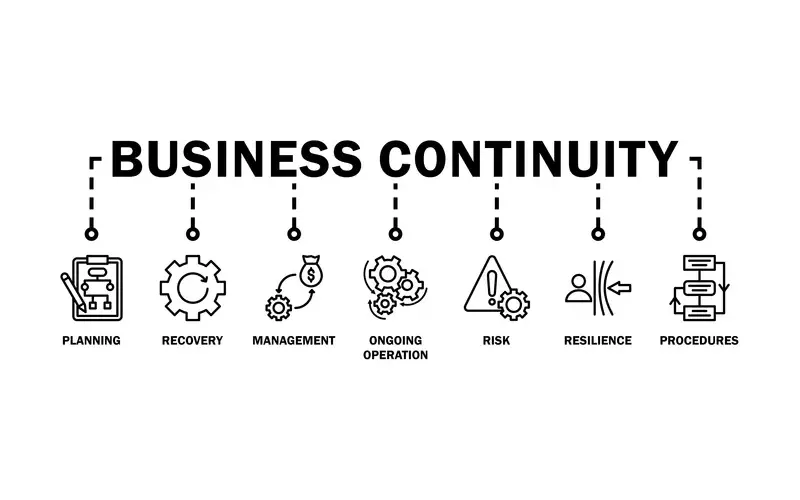Small businesses heavily rely on technology systems to drive their operations and deliver exceptional customer experiences. However, the ever-present threat of cyber attacks, natural disasters, and other unexpected events can significantly disrupt business continuity and compromise critical data. This is where a well-crafted disaster recovery plan becomes indispensable, enabling businesses to minimize downtime, protect data integrity, and ensure a rapid recovery in the event of a disaster. If you are a small business and you are curious about how to create a well-thought-out disaster recovery process then keep reading.
The Potential Impact of Lacking a Disaster Recovery Plan
Failing to have a comprehensive disaster recovery plan (drp) or disaster recovery procedures in place can have devastating consequences for small businesses. Without proper planning and preparation, a disruptive event could lead to:
- Prolonged Downtime and Business Interruption
- Inability to access critical systems and data can bring business operations to a halt
- Significant revenue losses due to disruptions in sales, production, and service delivery
- Data Loss and Compromised Data Integrity
- Permanent loss of valuable data, including customer records, financial information, and intellectual property
- Corruption or unavailability of data, leading to regulatory compliance issues and legal liabilities
- Reputational Damage and Loss of Customer Trust
- Extended downtime and service disruptions can damage the company’s reputation
- Customers may lose trust and take their business elsewhere
- Financial Losses and Recovery Costs
- Significant costs associated with data recovery, system restoration, and infrastructure repairs
- Potential legal fees and regulatory fines due to non-compliance
- Competitive Disadvantage
- While a business is recovering, competitors may gain market share and attract customers
Studies have shown that businesses without a disaster recovery plan are 6-16 times more likely to experience severe business disruption and may never fully recover from a disaster. The lack of a comprehensive disaster recovery strategy can potentially threaten the very existence of a small business.

The Importance of a Robust Disaster Recovery Plan
A robust disaster recovery plan (drp) is a comprehensive set of documented procedures and instructions that outline how an organization will respond to and recover from a disruptive event. It is a critical component of any business continuity strategy, as it helps organizations minimize the impact of a disaster, ensure the safety of employees, and protect valuable data and systems.
An effective disaster recovery plan should address key elements such as risk assessment, data backup and recovery strategies, emergency response and communication plans, and detailed recovery procedures for critical systems and data. Regular testing and continuous updating of the plan are also essential to ensure its effectiveness in the face of evolving threats and changing business needs.
By implementing a well-designed disaster recovery plan, small businesses can:
- Minimize Downtime and Business Interruption
- Quickly restore critical systems and data, ensuring business continuity
- Maintain customer confidence and minimize revenue losses
- Protect Data Integrity and Ensure Compliance
- Safeguard valuable data and intellectual property
- Meet regulatory requirements and avoid legal liabilities
- Enhance Reputation and Customer Trust
- Demonstrate a commitment to business resilience and customer satisfaction
- Build a competitive advantage by maintaining operational continuity
- Reduce Financial Losses and Recovery Costs
- Avoid costly data recovery and infrastructure repairs
- Mitigate potential legal fees and regulatory fines
- Facilitate Rapid Recovery and Business Resumption
- Enable a structured and organized approach to recovery efforts
- Quickly return to normal business operations and service delivery
Investing in a comprehensive disaster recovery plan is a proactive measure that can safeguard a small business’s operations, protect its assets, and ensure long-term success in an increasingly digital and connected world.
Developing a Comprehensive Disaster Recovery Plan
Creating a robust disaster recovery plan requires a structured approach and careful consideration of various factors. Here are some key steps to develop an effective plan.
Steps to Develop and Effective Plan
- Conduct a Business Impact Analysis (BIA)
- Identify critical business functions, processes, and dependencies
- Assess the potential impact of disruptions on operations, revenue, and reputation
- Determine recovery time objectives (RTO) and recovery point objectives (RPO)
- Identify Potential Threats and Risks
- Evaluate the likelihood and severity of different types of disasters (e.g., cyber attacks, natural disasters, power outages)
- Assess vulnerabilities in your infrastructure, systems, and processes
- Prioritize risks based on their potential impact on business operations
- Develop Data Backup and Recovery Strategies
- Implement robust backup procedures and backup systems
- Establish secure off-site data storage and data center locations
- Explore cloud-based disaster recovery solutions for added resilience
- Define Recovery Procedures and Communication Plans
- Document detailed recovery procedures for critical systems and data
- Establish a disaster recovery team and define roles and responsibilities
- Develop communication protocols for stakeholders, employees, and customers
- Test and Refine the Plan
- Regularly conduct tabletop exercises and simulations to test the plan’s effectiveness
- Identify gaps and areas for improvement
- Continuously update the plan to reflect changes in business processes and infrastructure
- Ensure Adequate Training and Awareness
- Provide training to employees on their roles and responsibilities in the event of a disaster
- Raise awareness about the importance of disaster recovery and business continuity planning
- Encourage a culture of preparedness and resilience within the organization
By following these steps and involving key stakeholders throughout the process, small businesses can develop a comprehensive disaster recovery plan that aligns with their specific needs and objectives.
The Ongoing Importance of a Dynamic Disaster Recovery Plan
It’s important to remember that a disaster recovery plan is not a one-time effort but a living document that requires regular updates and testing. As businesses evolve and technology advances, the plan must adapt to ensure continued effectiveness in mitigating the impact of disruptive events.
Investing in a well-designed disaster recovery plan is an essential investment for small businesses to protect their operations, safeguard their data, and maintain customer trust. By being proactive and prepared, businesses can navigate even the most challenging situations with confidence and resilience.

The High Cost of Disruptive Events and Cyber Incidents
The financial impact of a disruptive event or cyber incident can be staggering for small businesses, particularly those without a robust disaster recovery plan in place. According to a recent study by IBM the average cost of a data breach for businesses in 2023 was $4.45 million. For small businesses with limited resources, even a fraction of that cost could be devastating.
One recent high-profile cyber incident that highlights the importance of disaster recovery planning is the ransomware attack on Colonial Pipeline in 2021. This attack, which targeted the company’s IT systems and disrupted their operational technology, resulted in a shutdown of the pipeline for several days. The impact was widespread, leading to fuel shortages across multiple states and an estimated loss of $4.4 million per day for the company.
While the cost of implementing a comprehensive disaster recovery plan may seem daunting, it pales in comparison to the potential losses and recovery costs associated with a disruptive event or cyber attack. Proactive planning and investment in disaster recovery strategies can not only protect a small business from financial ruin but also safeguard its reputation, customer trust, and long-term viability.
Contact Ocean Solutions for a risk free conversation regarding our Disaster Recovery Solution.






